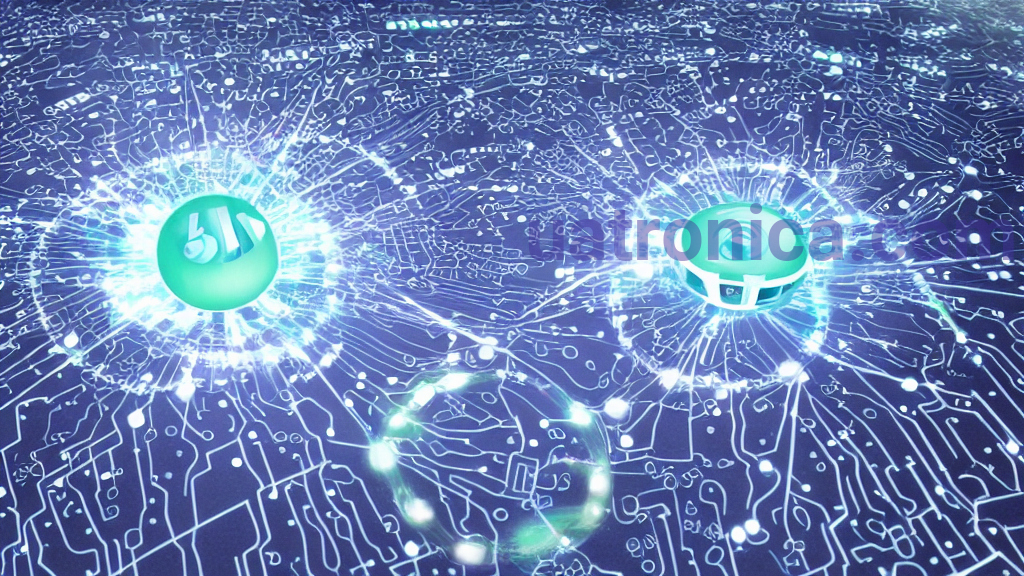5 Unknown Innovations That Will Expand the Frontier of Modern Electronics
Electronics is developing at an amazing speed, and new innovations can change our lives soon. Among the multitude of technological achievements, there are unique solutions that promise to radically change the electronics industry. In this article, we will focus our attention on five unknown innovations in electronics that can expand the boundaries of the modern world.
1. New materials for electronics
The use of new materials is the basis for many innovations in electronics. Nanomaterials such as graphene, perovskites and 2D materials open up new possibilities due to their unique properties. In particular, graphene makes it possible to create ultra-fast electronic devices, extremely thin and light sensors. According to materials science expert Dr. Olena Gromova, "the use of graphene in electronics can lead to revolutionary changes in the speed of data processing." This emphasizes the importance of research into new materials for modern electronics.
Advantages of new materials
- Graphene: High conductivity and lightness, making it ideal for creating compact devices.
- Perovskites: High efficiency in solar cells and photovoltaics.
- 2D materials: The potential for creating new types of transistors and sensors.
2. Quantum computers
Quantum computers represent the next level of data processing. Able to process huge amounts of information in seconds, these devices are a big step forward compared to classic computers. The past few years have seen some impressive breakthroughs: IBM researchers recently demonstrated a quantum computer with 127 quantum bits (qubits), opening new horizons in the field of AI and mathematical calculations.
Let's consider several key elements that determine the success of quantum computers:

| Element | Description |
|---|---|
| Qubit | The basic unit of information in quantum computers, which can be in several states at the same time. |
| Quantum entanglement | The property of qubits to be interconnected, even if they are separated. |
| Quantum algorithms | Specialized algorithms that use the principles of quantum mechanics to perform calculations. |
3. Augmented reality and electronics
Augmented Reality (AR) is gaining popularity in many fields, from entertainment to medicine. Research shows that electronics are at the heart of AR devices, providing the necessary computing power and visualization. For example, new AR glasses such as Google Glass allow you to perform a wide range of tasks, from navigation to video recording.
It is important to note that AR has the potential to:
- Education: interactive learning modules for students.
- Medicine: visualization of operating procedures in real time.
- In the commercial sphere: virtual fitting rooms for clothes.
4. Artificial intelligence in electronics
Artificial intelligence (AI) is already being used today to improve the performance of electronic devices. AI systems can learn and adapt on their own, making them indispensable in areas such as the automotive industry and healthcare. According to Gartner research, by 2025 more than 75% devices will use AI elements to improve their functionality.
The main areas of application of AI in electronics include:
- Production optimization: increasing efficiency and reducing costs.
- Data analysis: making better business decisions through deep analysis.
- Autonomous systems: self-driving cars and drones capable of operating without human control.

5. Internet of things
The Internet of Things (IoT) is becoming an important trend in electronics. Devices that interact with each other via the Internet open new opportunities for automation and management of housing, transport and production. In 2021, the number of connected IoT devices will reach 75 billion, providing a huge amount of data to analyze.
Some examples of IoT applications:
- Smart homes: automation of lighting, temperature and security.
- Health: monitoring the condition of patients using wearable devices.
- Transport: traffic monitoring and management systems.
Technological innovations in electronics
The transition to innovative technologies in electronics is already felt in all spheres today. For example, new ones MAX253ESA/MAX components for power supplies can change approaches to the design of electronic devices, providing stability and efficiency. In addition, by introducing consumers to new standards, such components can lead to cost reductions.
Current trends in electronics, such as the development of most new elements based on nanotechnology, continue to open new horizons for innovation.
Conclusions and perspectives
Innovations in electronics become the basis for new technologies and changes in our lives. Evaluating development forecasts, we can only guess how significant these changes can be. Backed by the expertise of experts, they shape our society and technological infrastructure. Looking at trends and progress, it's clear that the future of electronics is exciting.
For more information and articles on topics innovations in electronics or technological innovations, visit our website. Also, don't forget to check out our store for new items — catalog of electronic components.










